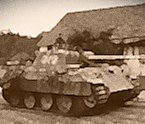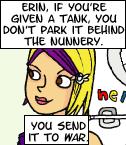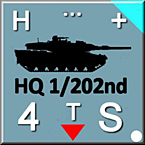Redmarkus5
Posts: 4456
Joined: 12/1/2007
From: 0.00
Status: offline

|
A further thought on the significance of Bataan and Stalingrad in relation to how long isolated units survive.
Bataan was always intended to be the last bastion in the event of invasion. Although preparations were not complete and more troops withdrew there than could be properly supplied, it wasn't a pocket in the sense of say Minsk or Kiev. Stalingrad, meanwhile, was a center of intense military operations for many months before it was encircled by the Soviets. Major Axis formations had their HQs and supply depots there or nearby. There were also two large airfields that could receive supplies and almost all of the Luftwaffe's lift capacity was employed for this.
The game doesn't model this well because higher HQs in-situ do not appear to build supply dumps of their own accord, as they would in reality. One part of the solution would be to extend the existing digging in logic so that when higher HQs 'dig in' they also build up a supply stock. This applies to all HQs and is distinct from a deliberate HQ buildup. They can then expend this stock EITHER, to attack, to defend OR over time, once pocketed.
Such an approach would mean that Soviet armies pocketed early on in the game would not have built up such a supply stock - they would be eliminated quickly, while armies pocketed later in the game, particularly following a period of inactivity, would be much better able to last a few turns, breakout, or hold until relieved.
The impacts on player technique would be immense - reserve armies, operational pauses, relief operations and breakouts, the need to fix a pocket in place by using part of the pocketing force on inner cordon duty, the list probably goes on.
_____________________________
WitE2 tester, WitW, WitP, CMMO, CM2, GTOS, GTMF, WP & WPP, TOAW4, BA2
|
 Printable Version
Printable Version










 New Messages
New Messages No New Messages
No New Messages Hot Topic w/ New Messages
Hot Topic w/ New Messages Hot Topic w/o New Messages
Hot Topic w/o New Messages Locked w/ New Messages
Locked w/ New Messages Locked w/o New Messages
Locked w/o New Messages Post New Thread
Post New Thread